All about abrasive nets
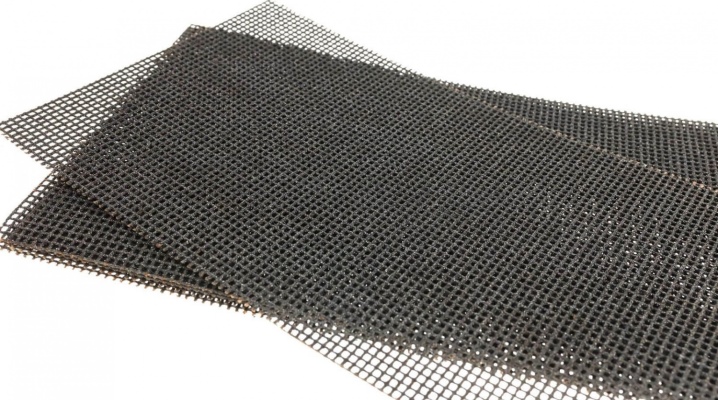
The nets used for plastering walls and ceilings are different. In the material of this article, we will consider their features, classification and areas of use. In addition, we will show you the main points of selection and application.
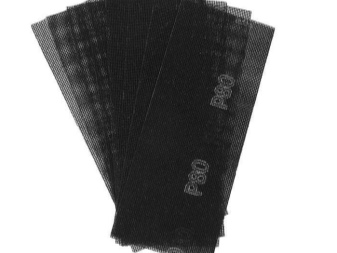
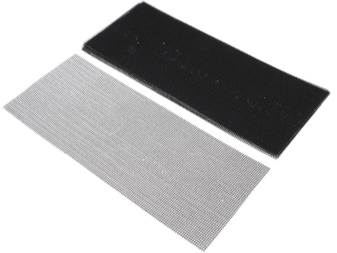
Description
Abrasive meshes are an alternative to sandpaper. This is a fiberglass sanding cloth coated on 2 sides with abrasive electrostatic shavings. Building material for grouting putty is characterized by the presence of graininess. Therefore, it is selected for a specific type of work.
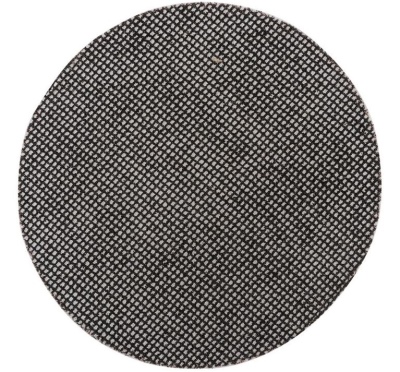
In fact, this is a lattice cloth on which abrasive particles of different sizes are applied. The cells themselves are almost the same in size, only the grains differ. Perforated mesh material is sold in specialized hardware stores or on the construction market.
During this sanding, neither dust nor putty will clog the holes. Depending on the variety, meshes can be used for wet filler applications. They are easy to use and practical. Allow to get by with a minimum amount of dust.
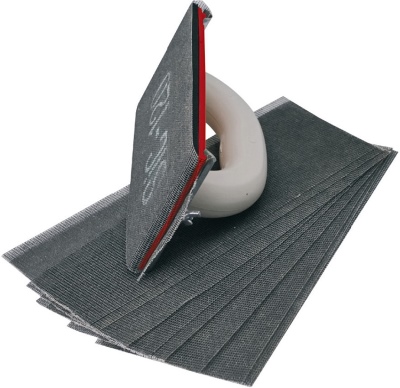
The abrasive mesh does not clog, it can have a different format for different sanding stones. It streamlines the workflow, although it costs more than sandpaper. It has a longer service life and better copes with the grinding function.
The surface trimmed with it looks smoother and smoother than when using sandpaper. The material for cleaning the walls gives the surface of the processed base not only smoothness, but also uniformity. The abrasive smooths out irregularities, pits, depressions, cracks.
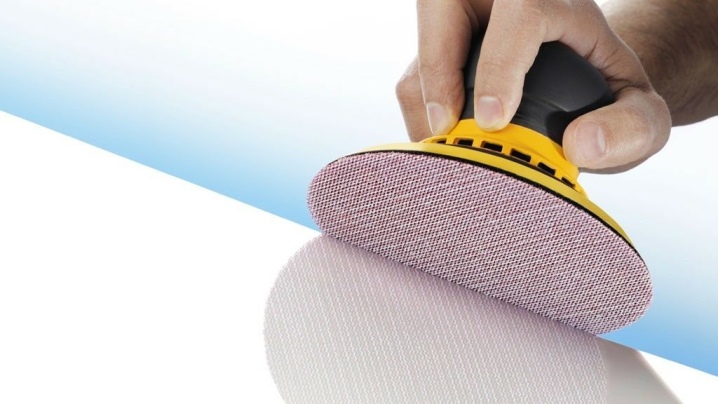
Externally, the mesh is a small rectangular canvas. Also on sale there are modifications in the form of a circle, which are used for automated surface treatment. The marking of the material indicates the grain size, country of origin, wear resistance, moisture resistance, purpose.


The mesh skin does not sour from water. To clean it, just remove the cloth from the grater and shake it. Compared to conventional sandpaper, dust will not scatter over the entire area of the room. The waterproof mesh has a tough and durable structure that does not lose its functional qualities.
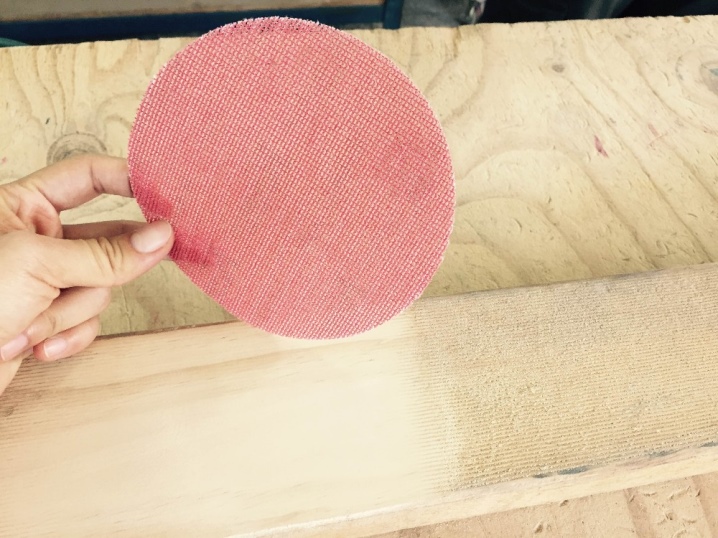
Species overview
Abrasive mesh for sanding walls and ceilings can be classified according to the type of abrasive and the type of grain.
By type of abrasive
The most commonly used abrasive for the grinding mesh is silicon carbide. However, in addition to this, other hard natural elements are also used as an abrasive. For example, an abrasive can be:
- corundum;
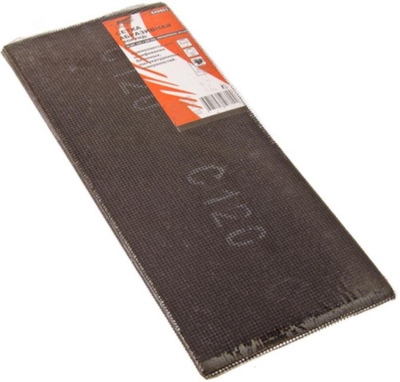
- emery;
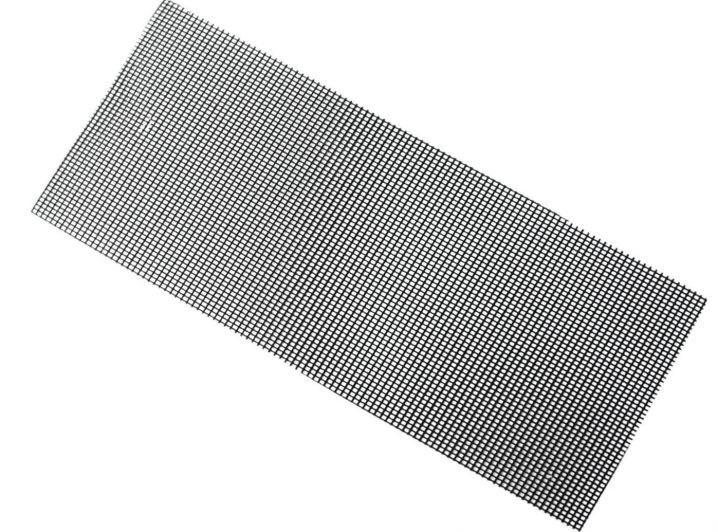
- flint;
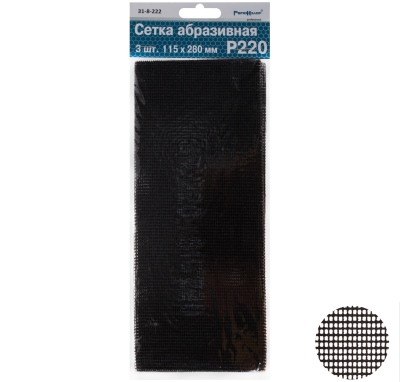
- pumice;
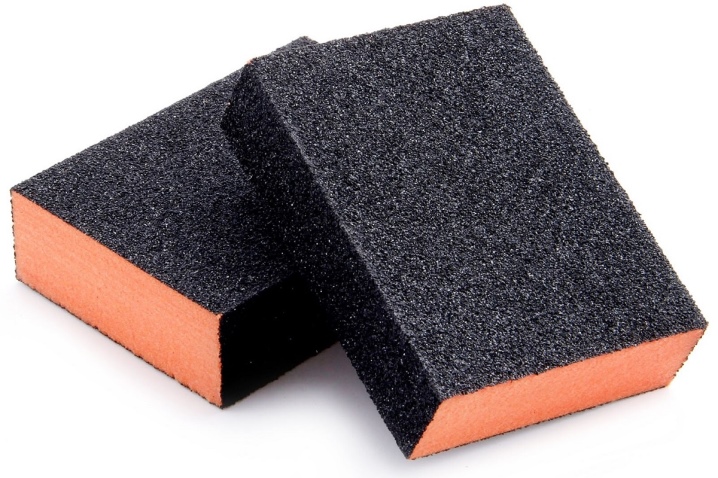
- diamond.

Pollination of the trowel can be open or closed. The grains cover the surface area of the web by 40-60%. They are good for soft substrates. In contrast, mashing and polishing hard substrates requires meshes with a continuous filling of abrasive.
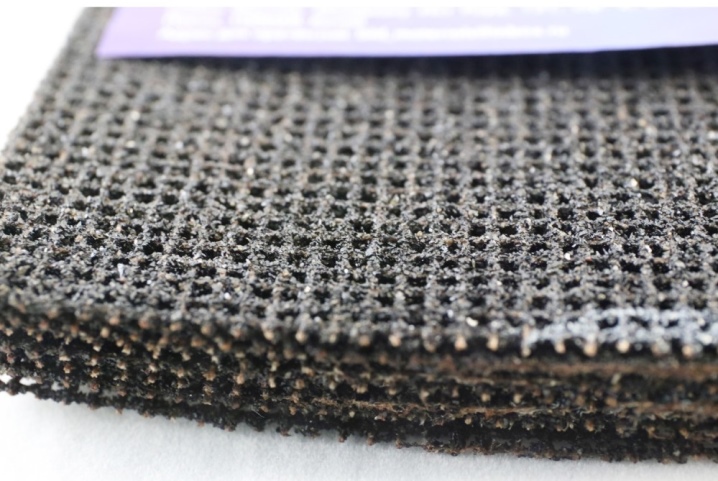
By grain
Granularity is the main technical characteristic of the plaster grout mesh. It shows the particle size of the applied abrasive. The parameter is indicated on the packaging or on the back of the sheet material. It usually ranges from 80 to 400 and 600. The most demanded parameters are sizes 120, 150, 180, 220.
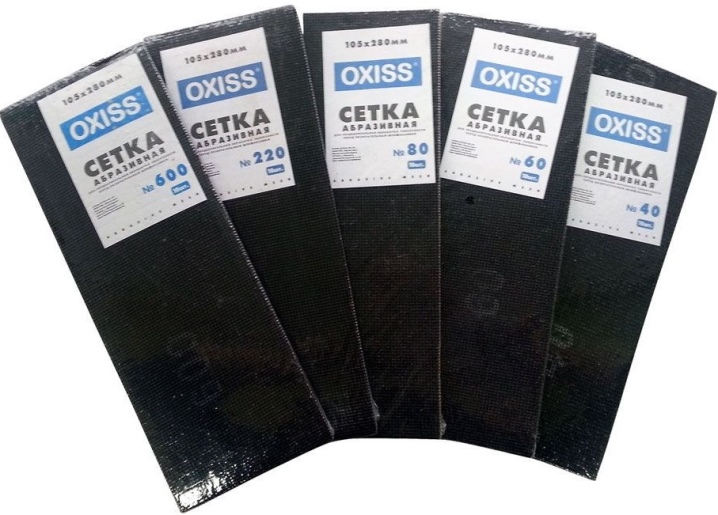
The higher the abrasiveness index, the softer the processed material should be. For example, parameters 40 and 80 are purchased for processing a starting surface with a coarse structure.Grains 100 and 120, respectively, already have a smaller grain size. Such grids are taken to prepare the base for painting or gluing wallpaper.
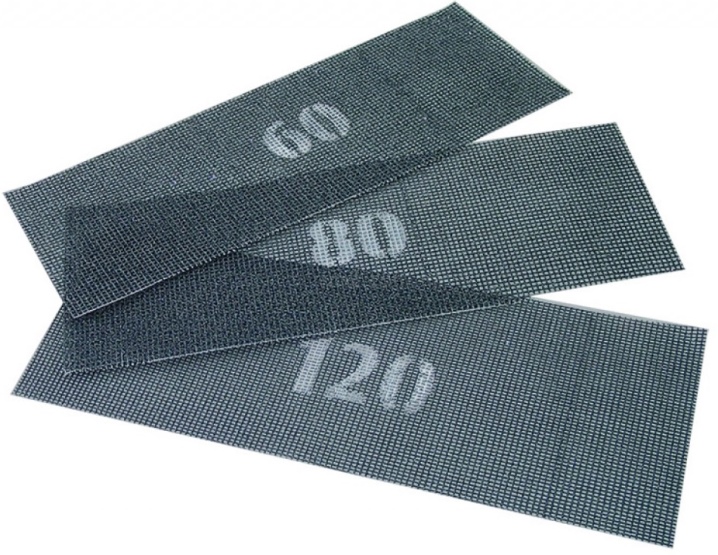
The canvas with the number 180 and above is bought for finishing the base with further application of glossy paint. These meshes help to achieve a perfect surface, they eliminate all the imperfections left after working with coarse skins. 280 and 320 - blades with fine abrasive. The smallest variety is mesh 600. It is almost smooth to the touch.

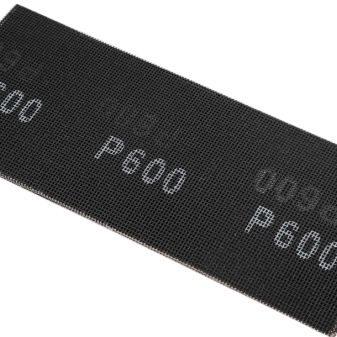
In modern products, the grain size of the mesh, according to GOST, is indicated by the marking "P" (for example, P 150). Some manufacturers use the old labeling. In this case, the letter "H" means that the size of the fraction is indicated in tens of microns (8-H, 6-H). “M” means the size is in microns. Grids marked "M" are called nulls.
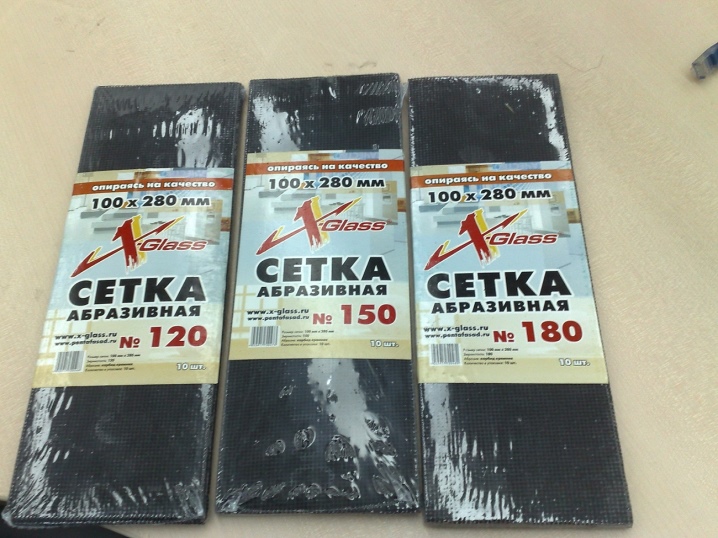
Dimensions (edit)
The standard dimensions of the abrasive cloth are 115x280 mm. The material is sold in packs of 5 and 10 pieces of the same abrasiveness. In addition, canvases with a size of 106x280 mm are on sale. They are suitable for narrower spatula floats. These nets are packed in packs of 25. There are also options with a width of 110 mm.
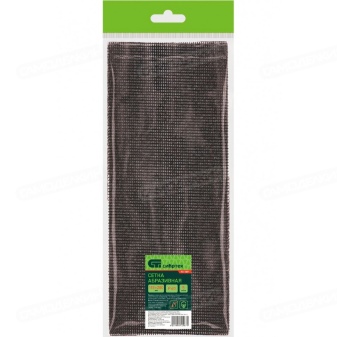
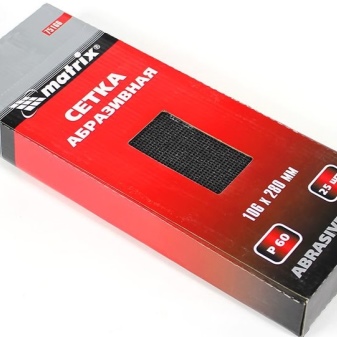
Taking into account the abrasive, thickness, length, the material is marked, for example, as follows: P 80, 106x280, P 600, 115x280 mm. Narrow nets are often purchased on order. Other manufacturers offer customers a product in a roll, differing in different grain sizes.
This mesh option is taken for bulk work. The dimensions of the canvas are determined by the manufacturer, which means that the length of the roll can be very diverse. The roll view of the net is a convenient and economical option for buyers and craftsmen who are constantly involved in repair work.
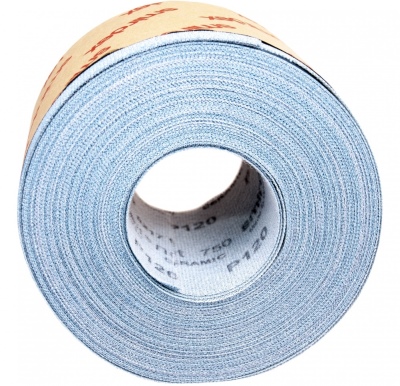
Application area
Abrasive painting net is bought for grinding wall and ceiling bases made of wood, plasterboard and other materials. It is used for finishing base coat for wallpaper and painting. Based on the abrasive, the material is used for various plaster: putty, soft gypsum plasters. The surface to be treated can be cement, sand-lime, gypsum.
The mesh is bought for cleaning metal, plastic, concrete, brick surfaces. It prepares the plastered surface for finishing. It not only polishes, but also removes rust, old paint, and whitewash from the metal body. It can be used to grind almost all types of plastering material.
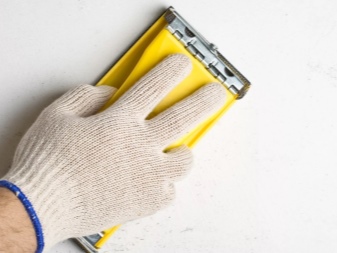
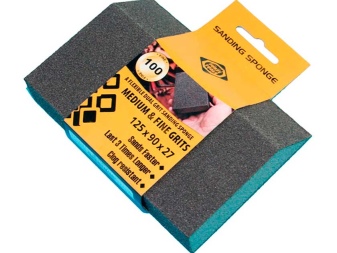
Selection Tips
Abrasive mesh is not a versatile material for surface treatment. To choose it correctly, you need to take into account the size of the consumable, correlate it with the parameters of a grater or an automatic tool. In addition, you need to take into account the different levels of grain:
- if you need to sand the dried layer of starting putty, while removing defects, take a package of canvases with a fraction of 40-80;
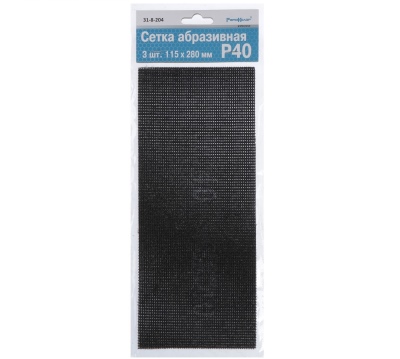
- when you need to clean up an almost even starting coating, buy material with a grain of 120, 150, 180;
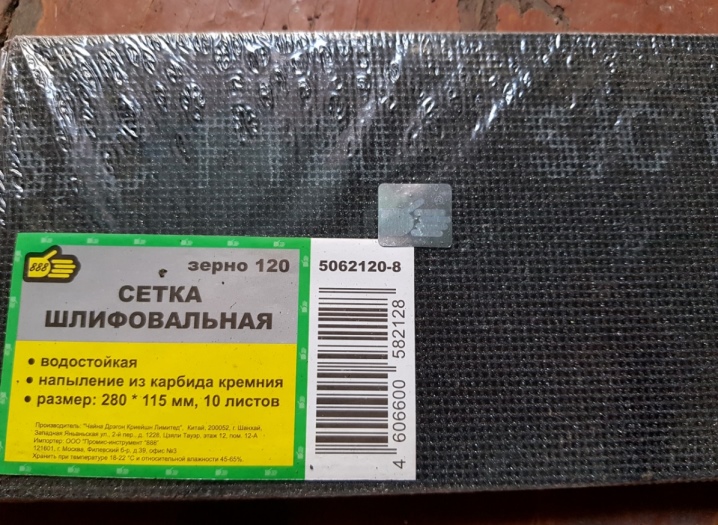
- fine abrasive mesh (220, 240, 280) is suitable for work with finishes applied in thin layers.
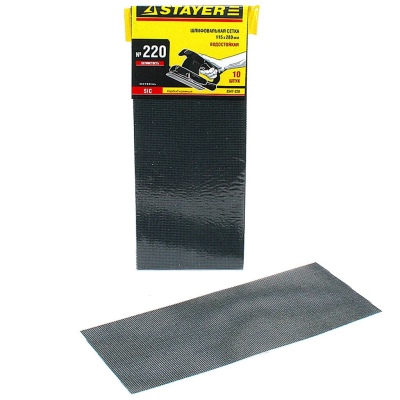
It is necessary to select nets taking into account the specific material: coarse grain will simply riddles the silky finishing plaster. It will leave trellised grooves on the surface.
If the wall is being prepared for gluing wallpaper, pay attention to its thickness. The thinner the wallpaper, the better and smoother the wall should be, and, consequently, the finer the size of the abrasive. For example, mesh fabric no. 220 or higher is suitable.
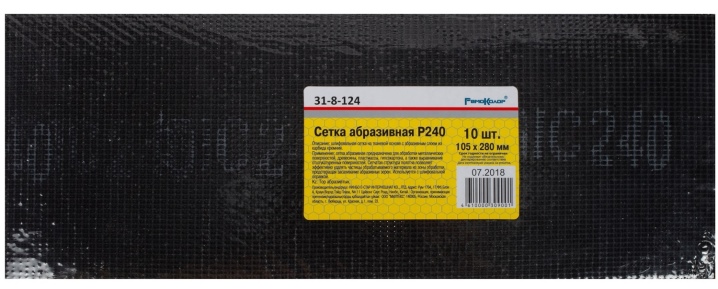
Choosing the right abrasive will reduce the consumption of mesh skin by several times. On the contrary, if you buy an option with a soft abrasive for a rough surface, then the canvases will have to be changed almost every 1-1.5 m.
As for the width of the canvas, then you need to take such nets, the width of which coincides with the width of the grater bar. Otherwise, stripes will form on the sides during work. The mesh should not be wider than the bar or, on the contrary, narrower.
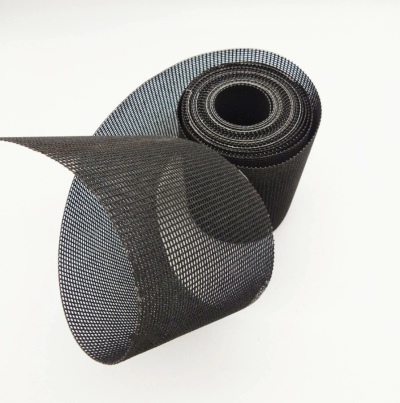
As for the quality, you can evaluate it right in the store. High-quality mesh is cut into rectangular canvases with parallel coincidence of edges. The edges of the bad product are cut off with a bevel.
In addition, with a good material, the abrasive does not fall off the grid base. If there are scattered grains of grain in the package, such a product is not worth buying. During surface treatment, particles can be pressed into soft plasters, which is unacceptable when finishing substrates for a topcoat.
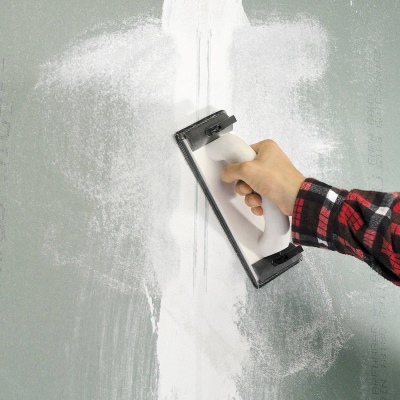
The abrasive mesh for sanders is sized to match the sole of the machine. They are easily attached to the device and are selected in the same way as conventional counterparts.

How to use it correctly?
Since it will not be possible to completely do without dust in the work, you need to cover all possible places and furniture with protective plastic wrap. This will eliminate the need for a long and tedious cleaning of objects after sanding. Before sanding the surface, you must also close the cracks in the door frame (for example, with tape or a wet towel).
There are many ways to use an abrasive mesh. The classic method involves the use of a special holding float with clamps to fix the canvas. Thanks to the foam pad, the sanding belt will fit snugly against the surface.
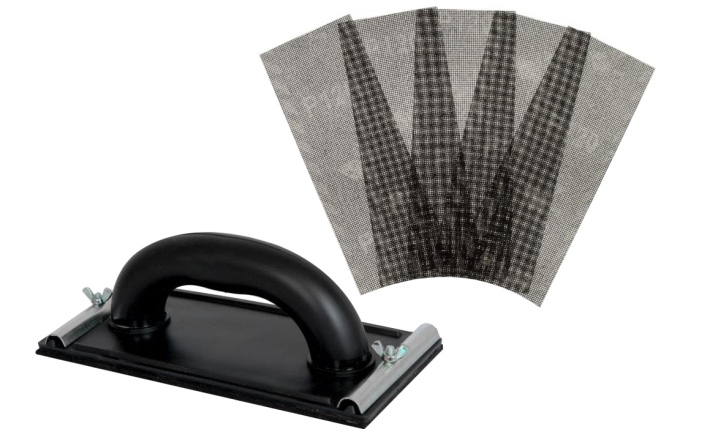
The cloth is attached with either side to the grater, clamping on the sides and laying exactly in the center on the working side of the grater. After that, the grater is attached to the base and in a circular motion with a shift, the surface is grinded with uniform pressure. The movement resembles the unbreakable writing of the capital letters "e".
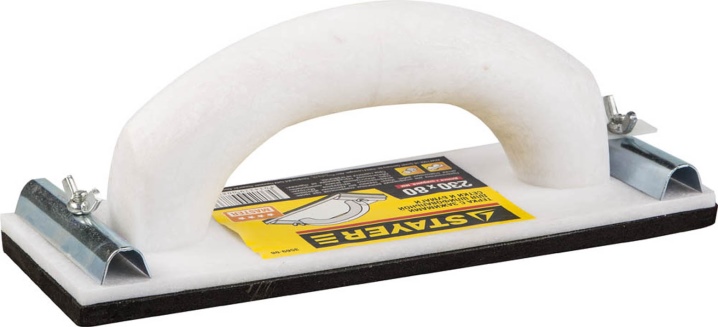
The surface is sanded after the plaster material has dried. This is done before priming, because otherwise the work will be more difficult. According to safety precautions, you need to work in protective gloves and a respirator.
The technology of work is approximately as follows:
- perform a visual inspection of the surface for complete drying and the presence of voids;
- put on protective equipment (respirator, goggles, gloves);
- a portable lamp is placed to visualize coating defects;
- test the abrasive in work on an inconspicuous area;
- start sanding from the top of the wall;
- gradually move down, without too much pressure on the grater.
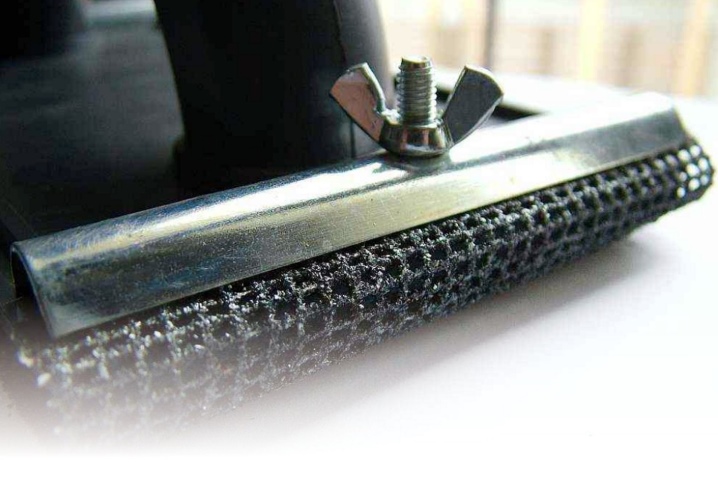
If necessary, movements, in addition to circular movements, can be "up-down", "right-left". However, if the abrasive is coarse, streaks may remain.
- after finishing the main part, corners and hard-to-reach areas are sanded;
- are engaged in quality control, directing a light beam at a wall at an acute angle (a shadow will be visible in places of irregularities);
- if necessary, the mesh is removed from the base, applied to the wall and the surface is leveled, barely holding it with the palm of your hand;
- check the work for the omission of defects, if necessary, trim everything.
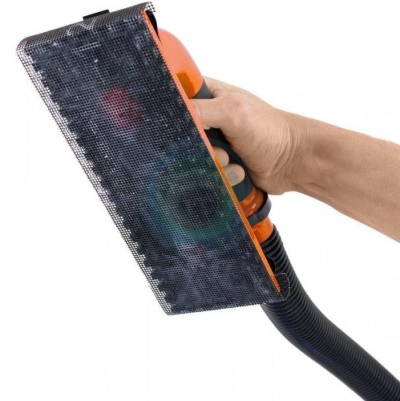
Then the surface is primed, allowed to dry, then putty with a layer of finish. Wait for the thin layer to dry, then proceed to sanding the surface:
- are engaged in finishing grinding using a mesh with a fine abrasive (tangential movements);
- remove debris, prime the surface (do not prime soft plasters).
You can work with the mesh manually, using bars and a grinder. The latter method is considered professional, while saving a lot of time, and the quality is noticeably different from manual work.
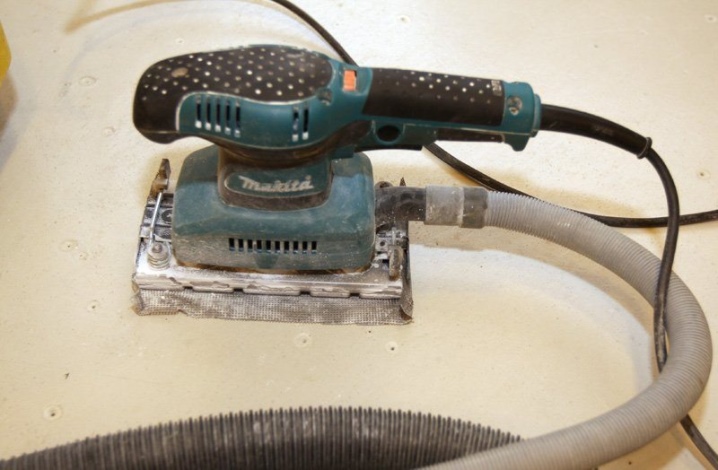
As soon as one side is worn, you can remove the blade from the float, turn to the other side and continue sanding the surface. However, despite the water resistance of the mesh, it cannot be used in water. Not only will the mesh lose its performance characteristics, it will also spoil the surface to be treated.
If the master uses a surface grinder, the mesh is placed directly on it.In fact, when connected to the network, the mesh disk will perform rotary movements, through which the specialist performs the grinding of the plaster material. It is convenient and fast to work with the machine.
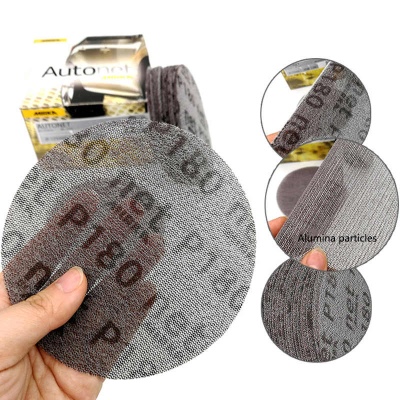
A machine with a round mesh is used for grinding plaster of large areas. However, in this case, the corners will have to be processed manually. When working with a grinder, a 60 or 80 mesh is taken for starting stripping. Abrasive 100 is sufficient for finishing grouting.
The nature of the movements of the grinder is circular. Initially, large surface imperfections are eliminated. After that, they get rid of dust, construction debris and inspect the surface for residual flaws. If they are, adjust with a spatula. After that, they are engaged in finishing sanding.
As for working in hard-to-reach places, a special corner is used here, or the craftsmen cut off a small piece of canvas, wind it around a finger, and then polish the corners, door or ceiling beams, and the location of the radiators. The elasticity of the mesh does not change, due to which it is possible to complete the finishing work with high quality.
It is not difficult to understand that the mesh has fallen into disrepair. The quality and speed of the processed area decreases, the grater practically slides over the surface without cleaning irregularities.
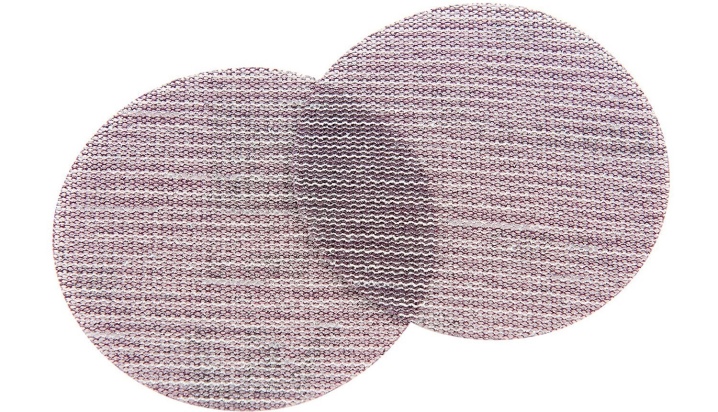













The comment was sent successfully.